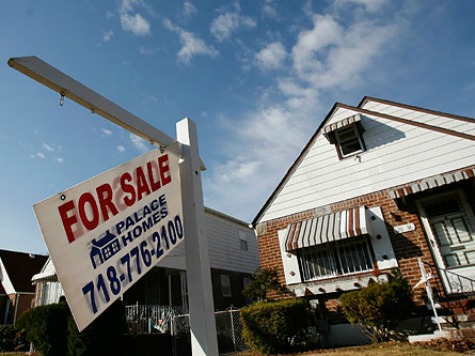President Obama wants private banks to use depositor and investor funds to write 30-year fixed rate mortgages at affordable rates. He won’t admit those goals and others imposed by Congress require the federal government to guarantee mortgages and banks against failure.
Mortgages require banks to borrow short and lend long. They pay depositors and investors interest rates that fluctuate and offer funds to homeowners at fixed rates for the duration of loans.
Thirty-year mortgages require banks to bear three risks: homeowners will keep their jobs and not become disabled; rates paid by banks for money won’t rise above the loan rates, and homes remain marketable at prices equal to outstanding loan balances.
Bankers are not clairvoyant, and before World War II, most mortgages were no more than three to five years with balloon payments when loans came due. Then federally sponsored, but privately-owned, Fannie Mae and Freddie Mac began purchasing from banks mortgages that met stringent conditions–prime loans–and a wholly private market emerged for sub-prime and jumbo loans.
Fannie, Freddie, and Wall Street investment houses sold mortgages bundled into bonds to insurance companies, pension funds, and others. Fannie and Freddie guaranteed the loans behind their bonds by charging borrowers fees equal to a few percent of their loan, while investors that bought securities backed by sub-prime and jumbo loans took their chances as if they were buying corporate bonds.
The system was premised on banks carefully evaluating borrowers–verifying their incomes and stability of their jobs–and appraisers accurately valuing properties.
Leading up to the financial crisis, banks and appraisers did a sloppy job, and excessive lending drove home prices to bubble levels. When those collapsed, Fannie, Freddie, and private banks required bailouts–homeowners lost jobs, couldn’t pay what they owed, and banks couldn’t sell foreclosed properties.
Bankrupt, Fannie and Freddie were purchased by the Treasury for $188 billion, and the FDIC absorbed the losses of smaller failed banks. The Treasury and Federal Reserve bailed out the biggest banks.
Prior to the crisis, Congress forced banks to lend in disadvantaged neighborhoods where property values are more subject to collapse and job security less certain. Adding those risks to bank portfolios guaranteed many would take outsized losses.
Now banks are reluctant to write mortgages they can’t sell to Fannie and Freddie–making the federal government the primary source of mortgage finance. The president wants to get private banks back into the mortgage business and require shareholders to shoulder risks the government now bears, but he won’t admit that in today’s economy mortgages are simply too risky for private investors.
Thanks to slow growth and global competition, borrowers are less likely to have stable jobs.
When families were supported by one wage earner, non-working spouses could seek employment when primary breadwinners became unemployed. Today’s families, depending on two paychecks, don’t have reserve capacity.
Dodd-Frank raised lending standards, but compliance costs compel community banks to sell out to their larger brethren, who are less able to assess the character of borrowers. Small bank lending officers know who in a community always pays their debts, but loan officers from New York or Charlotte lack that knowledge.
The president wants to make loans affordable for everyone, but banks can’t lend in certain communities without charging higher rates to compensate for bigger risks. Many in Congress and the president associate this with racism when larger risks are the issue.
No president, Republican or Democrat, has been able to find a way around those facts. If Obama wants banks to lend money at 4 or 5 percent when inflation is 2 or 3–and lend at similar rates in disadvantaged neighborhoods–then neither privately owned banks nor bond investors will take those risks without government guarantees and subsidies behind the loans and the solvency of banks.
Peter Morici is an economist and professor at the Smith School of Business, University of Maryland, and widely published columnist. Follow him on Twitter.

COMMENTS
Please let us know if you're having issues with commenting.